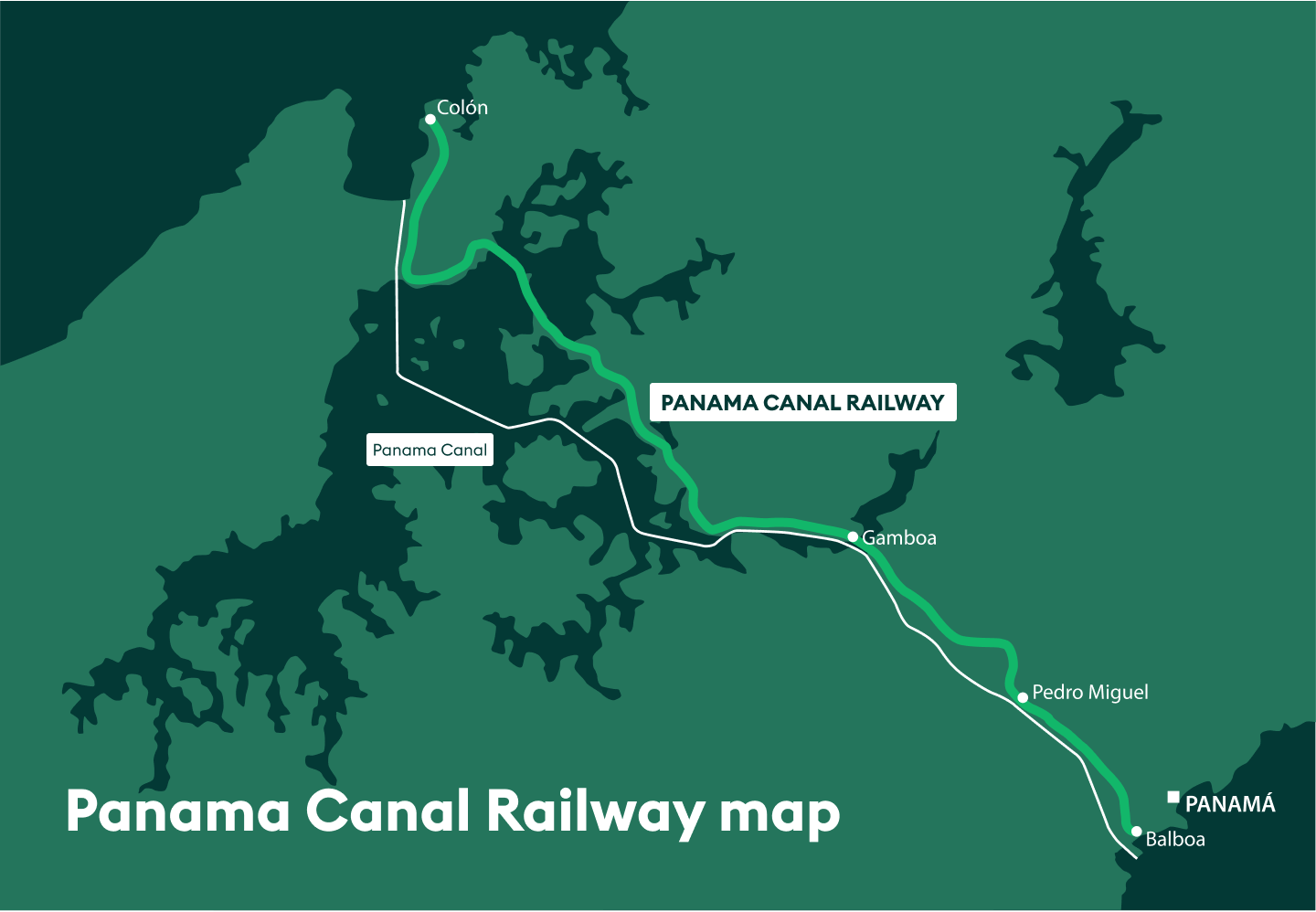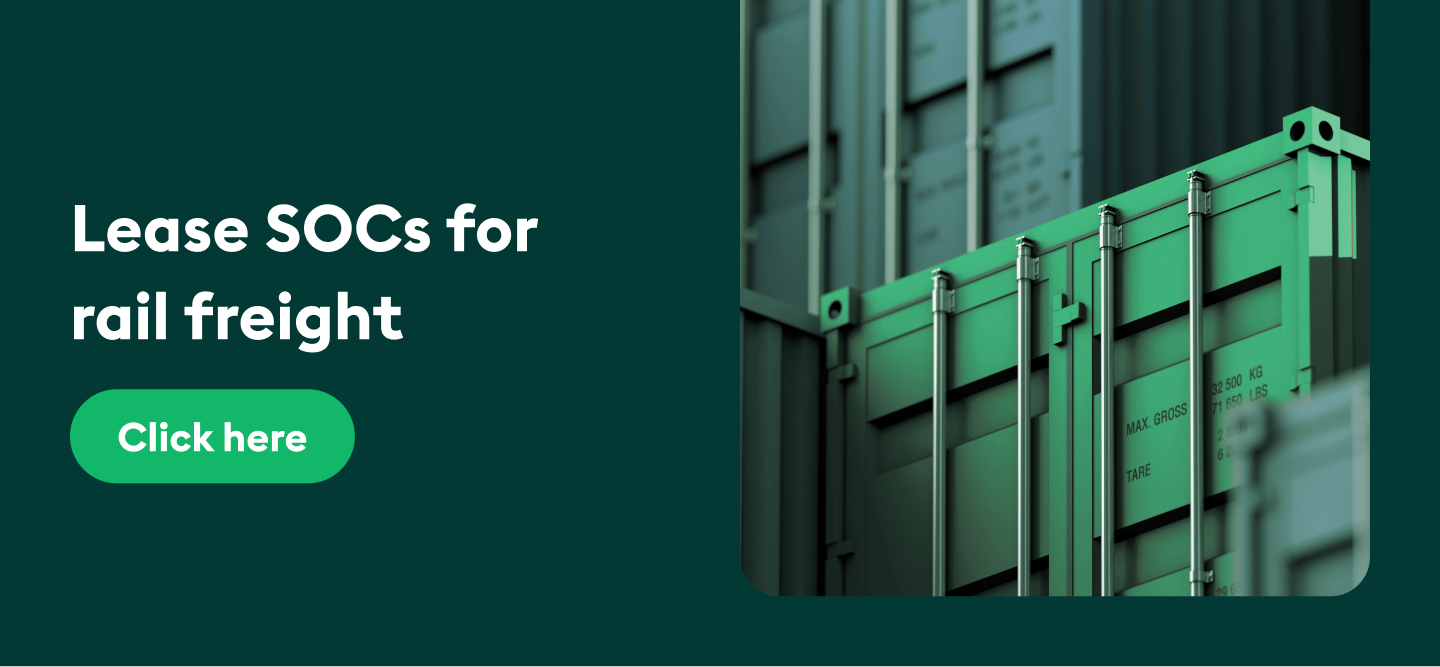The Panama Canal Railway connects the Atlantic and Pacific Oceans and is a great alternative to the Panama Canal. Read this blog to find out about the railway and how you can source containers to move your cargo on this route.
The Panama Canal Railway provides a valuable alternative to navigating the drought-stricken Panama Canal. Rail freight offers a reliable, affordable, and efficient option for moving cargo amid the challenging conditions in the canal. We’ll discuss more about this later in the blog.
But if you have cargo to be transported on this route and are looking to source rail containers at affordable leasing rates, try our public search below.
All you have to do is select “I want to use containers” and then key in your pick-up and drop-off locations. Take your pick from 100,000+ units supplied by 1,700 certified members at competitive, comparable, and negotiable rates. Try it now!
25 x 40HC
Container Supplier
Container Company Blurred Name
5
Pick-up charge
User pays
$120
19 Freedays
$44.20 Per diem
What is the Panama Canal Railway?
The Panama Canal Railway is a vital transportation link that runs parallel to the route of the Panama Canal, connecting the Atlantic Ocean and the Pacific Ocean. This railway serves as an alternative or complementary means of transportation for goods between the US East and West coasts.
The railway handles cargo that is either too large or unsuitable for transit through the Panama Canal. This is particularly relevant for specialized shipments that cannot fit through the canal’s locks or may be subject to restrictions. The railway facilitates intermodal container transportation, allowing cargo to be seamlessly transferred between ships and trains. It’s a great alternative to the Panama Canal, offering a reliable way of transporting time-sensitive or high-value shipments, especially during a crisis like the canal drought.
Panama Canal Railway map
The revitalized Panama Canal Railway features a 47-mile single railroad line connecting Balboa and Colon, running parallel to the Panama Canal route. It’s equipped with two-way traffic capabilities at strategic locations. Trains can seamlessly travel between the Atlantic and Pacific intermodal terminals, accommodating up to 10 trains in each direction each day, with the potential to increase to 32 daily train runs.
According to the Panama Canal Railway Company (PCRC), Phase I of the railway can carry around 500,000 container moves annually. The company has plans to gradually increase capacity by approximately 250,000 moves per year, aiming for a maximum of 2 million TEUs annually.
The Panama Railway also operates a rail system of double-stack bulkhead-type rail cars in two sets of six. Each is capable of accommodating an average of 75 containers. A typical mix includes sixty 40ft containers and fifteen 20ft containers.

If you’re fed up with the current canal drought situation or just looking for alternatives to the Panama Canal, rail freight is your best option. You can ship your cargo on the Panama Railway easily by leasing containers for one-way moves. Container xChange is a great platform for you to lease your units one way. You can browse offers from 1,700 vetted suppliers and find the cheapest rates for your deals. Check out leasing offers on your preferred route now!
Impact of Panama Canal drought on shipping
Gatun Lake, an artificial lake crucial for the Panama Canal’s operation, is facing its lowest water levels ever. The extreme drought is exacerbated by an ongoing El Niño, a climate change phenomenon expected to persist until May 2024. The drought is affecting the number of vessels passing through the canal.
The canal typically handles an estimated 5% of seaborne trade, including 46% of the container traffic between the US East Coast and Northeast Asia. The Panama Canal Authority has reduced the daily traffic of cargo ships by nearly 40% compared with last year. The New York Times highlights that the toll revenues of the Panama Canal have dropped by $100 million per month since October 2023 due to the Panama Canal restrictions.
Since the drought has reduced the number of ships through the canal, the railway is coming to the rescue by offering a cheaper and faster way to move cargo. If you’re looking for containers on this route, we’ve got you covered. On our leasing platform, you can choose from 100,000+ containers in 2,500+ locations globally, including the Panama Canal Railway. Simply click the banner below to start browsing through leasing offers from vetted suppliers.
History of Panama Canal Railway
The Panama Railway is more than a century old and was established in 1855. However, the railway gradually went into disuse due to a lack of investment and maintenance. With the construction of the Panama Canal and the highway across the isthmus, railway traffic declined further.
In 1977, after the Carter-Torrijos Treaty that started the retrocession process of the Panama Canal Zone to the Government of Panama, the railway was one of the first assets to be turned over.
In 1998, the railroad started through a 50-year concession by a joint venture of Kansas City Southern and Mi-Jack Products. The Panama Railway reopened in 2001 because private companies saw a chance to make money by improving it and using bigger ships called post-Panamax containerships.
Latest developments in Panama Canal Railway
Many vessels have started to divert to longer ocean routes to avoid the Panama Canal, while the global shipping company Maersk recently announced they will shift some of their cargo to rail as a Panama Canal alternative. Maersk’s Oceania-Americas (OC1) service, connecting Australia and New Zealand with ports in Philadelphia and Charleston, South Carolina, will now utilize the Panama Canal Railway.
In our latest industry report Where Are All the Containers, we explore how shipping companies are navigating challenges in the Panama Canal’s operations. Download the free report here to get more details about the latest developments on the Panama Canal and shipping in the US.
Find containers on the Panama Canal Railway at the best prices
The Panama Canal Railway offers a great alternative to shipping through the drought-stricken Panama Canal. But how do you find containers on this rail route at affordable rates? Right here on the Container xChange!
On the Container xChange leasing platform, you can lease shipper-owned containers (SOCs) from vetted suppliers. A container is considered a shipper-owned container when the Beneficial Cargo Owner (BCO), freight forwarder, or NVOCC organizes their container. These containers offer more flexibility as compared to carrier-owned containers (COCs), which is crucial for multimodal transportation.
Our platform allows you to connect with 1,700 vetted container suppliers in 2,500+ locations globally. All you have to do is select your desired route. You can then choose from multiple SOC listings and negotiate directly with suppliers for better terms.
We have 100,000+ containers available on our platform for you to choose from. Want to check out leasing offers on your desired route? Simply click the banner below to get started!
Panama Canal Railway: Common FAQs
What is the route of the Panama Canal?
The Panama Canal is a constructed waterway that connects the Atlantic and Pacific oceans across the Isthmus of Panama.
Who owns the Panama Canal Railway?
The Panama Canal Railway is operated by the Panama Canal Railway Company (PCRC). Since 1998, it has been jointly owned by then Kansas City Southern, now Canadian Pacific Kansas City, and Mi-Jack Products and leased to the government of Panama.
Which shipping routes use the Panama Canal?
Some of the key Panama Canal shipping routes are the US East Coast and East Asia; the US East Coast and the West Coast of South America; Europe and the West Coast of North America; Europe and the West Coast of South America; the East Coast of North America and Oceania, and the US East and West coasts




